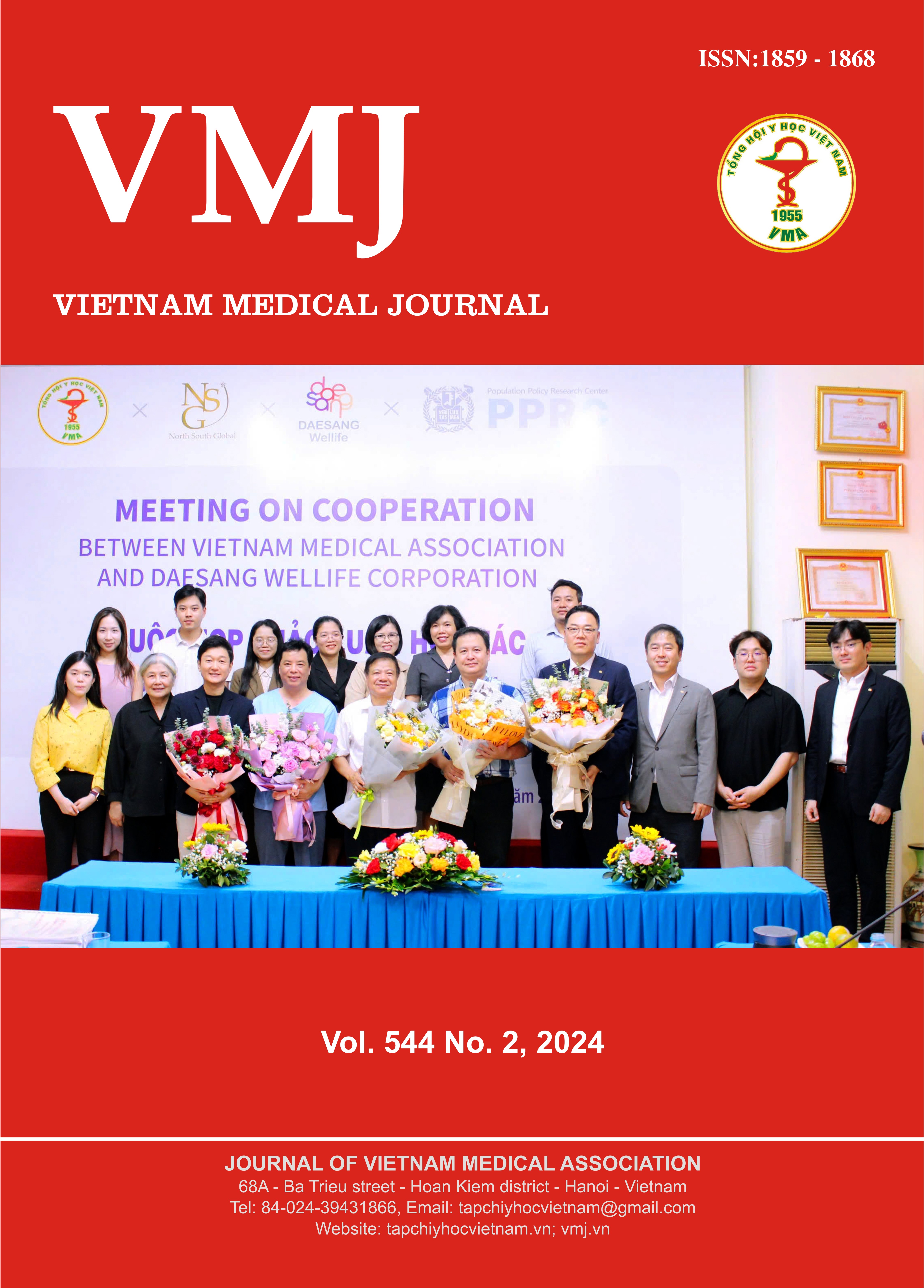EFFECTS OF SUPPLEMENT LEANKID 100+BA ON NUTRITIONAL STATUS AND HEALTH OF 12-24 MONTHS OLD CHILDREN
Main Article Content
Abstract
The intervention study to evaluate the effects of nutritional product supplementation Leankid 100+BA on nutritional status and health of 12-24 months old children was completed in Ninh Binh in February 2024 with a control group (60 children) and an intervention group (60 children). Results: After two months of the intervention, the evaluation indexes of the intervention group comparing with the control group were: respiratory infection was lower 50% (3.3% vs. 53.3%); diarrhoea was lower 38.3% (1.7% vs. 40.0%); constipation was lower 16.7% (0% vs. 16.7%); anorexia was lower 40% (10.0% vs. 50.0%); difficulty sleeping was lower 38.4% (8.3% vs. 46.7%); average weight was higher 0.55 kg (p<0.05); average height was higher 0.56cm; risk of underweight malnutrition was lower 45.0%; risk of stunting was lower 18.4%; risk of wasting was lower 16.6%; underweight malnutrition was lower 33.3%; stunting was lower 16.6%, respectively; these differences were statistically significant (p<0.05). The rate of drinking enough milk was 93.3% with 2 meals/day. Conclusion: Supplementing of Leankid 100+BA product improved weight, height, digestion, anorexia, difficulty sleeping, and immunity system and reduced respiratory infection and risk of malnutrition. The product acceptability was high.
Article Details
Keywords
micronutrients, formula milk, height, weight
References
2. World Health Organization. Essential Nutrition Actions: improving maternal, newborn, infant and young child health and nutrition. Who Press, Geneva, WHO. 2018.
3. The Prime Minister of Vietnam. Decision No. 02/QD-TTg Approving the "National Nutrition Strategy for the 2021-2030 period and vision to 2045." 2022.
4. Harton A, Myszkowska-Ryciak J. Types of Milk and Its Substitutes Are Given to Children (6-36 Months) in Nurseries in Poland: Data from the Research and Education Project “Eating Healthy, Growing Healthy”. Int J Env Res Public Health. 2018;15(12):2789. doi: 10.3390/ijerph12789.
5. World Health Organization. Levels and trends in child malnutrition, Key findings of the Edition of the Joint Child Malnutrition Estimates. Who Press, Geneva, WHO. 2020.
6. Zorlu G. New WHO child growth standards catch on. Bull World Health Organ. 2011 Apr 1;89(4):250–1.
7. Stefanache A, Lungu II, Butnariu IA, et al. Understanding How Minerals Contribute to Optimal Immune Function. J Immunol Res. 2023 Nov 1;2023:3355733.
8. Salvatore S, Battigaglia MS, Murone E, et al. Dietary Fibers in Healthy Children and in Pediatric Gastrointestinal Disorders: A Practical Guide. Nutrients. 2023 May 6;15(9):2208.
9. Aggarwal R, Bains K. Protein, lysine and vitamin D: critical role in muscle and bone health. Crit Rev Food Sci Nutr. 2022;62(9):2548-2559.
10. Giovanni Savarino, Antonio Corsello. Macronutrient balance and micronutrient amounts through growth and development. Ital J Pediatr. 2021 May 8;47(1):109.


